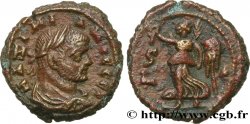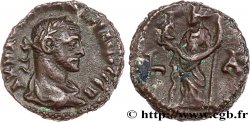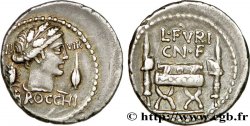v27_0282 - MAXIMIANUS HERCULIUS Aurelianus
MONNAIES 27 (2006)
Starting price : 200.00 €
Estimate : 300.00 €
unsold lot
Starting price : 200.00 €
Estimate : 300.00 €
unsold lot
Type : Aurelianus
Date: 20/11/293 - 31/12/293
Mint name / Town : Lyon
Metal : billon
Millesimal fineness : 50 ‰
Diameter : 21,5 mm
Orientation dies : 6 h.
Weight : 3,48 g.
Rarity : R1
Officine: 3e
Emission: 11e
Coments on the condition:
Exemplaire de qualité exceptionnelle pour ce type de monnayage. Portrait de toute beauté. Revers de haut relief. Aurelianus ayant conservé son brillant de frappe et son coupant d’origine. Magnifique patine avec des reflets mordorés, légèrement taché
Catalogue references :
Predigree :
Cet exemplaire provient de la trouvaille n° 1 et de ROME I, 1995, n° 111
Obverse
Obverse legend : IMP MAXIMIANVS AVG.
Obverse description : Buste radié et cuirassé de Maximien Hercule à droite, avec pan de paludamentum, vu de trois quarts en avant (B01).
Obverse translation : “Imperator Maximianus Augustus”, (L’empereur Maximien auguste).
Reverse
Reverse legend : SALVS - AVGG/ -|-// III.
Reverse description : Salus (la Santé) debout à droite, tenant une patère de la main gauche et nourrissant un serpent qu'elle tient de la main droite.
Reverse translation : “Salus Augustorum”, (La Santé des augustes).
Commentary
Avec l’intégralité de son argenture. Poids léger. Même coin de droit que l’exemplaire du Münzkabinett du Staatliche Museen de Berlin, Bastien n° 572b, pl. XLI. Même coin de revers que l’exemplaire du Musée des Beaux Arts de Lyon, Bastien n° 572c, pl. XLI. Prendra le numéro 572f dans le Supplément III du Bastien.








 Report a mistake
Report a mistake Print the page
Print the page Share my selection
Share my selection Ask a question
Ask a question Consign / sell
Consign / sell
 Full data
Full data










